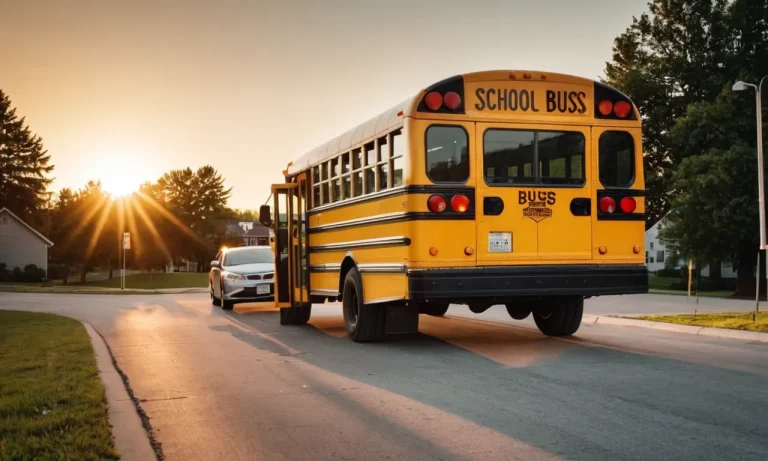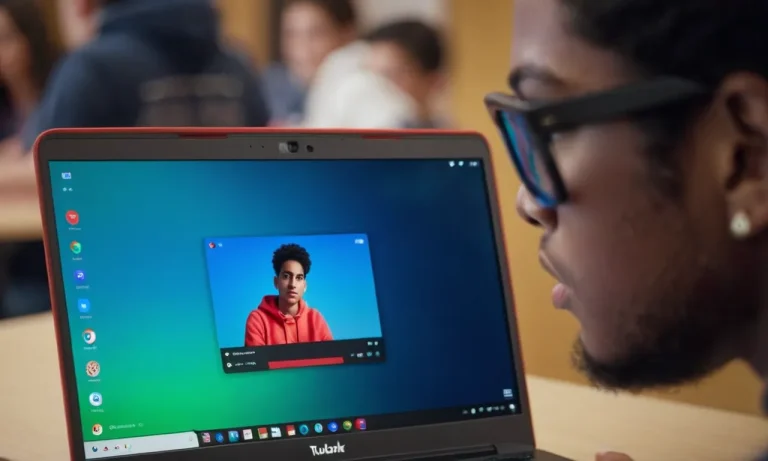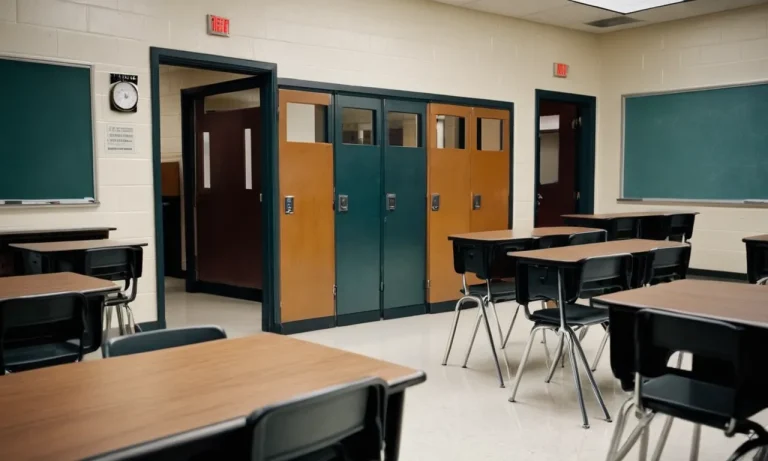Have you ever wondered why the school day lasts for a grueling 8 hours? It’s a question that has puzzled students, parents, and educators alike for decades. The length of the school day has a profound impact on our lives, shaping our daily routines and influencing our overall educational experience.
If you’re short on time, here’s a quick answer to your question: The 8-hour school day is a result of historical, educational, and practical considerations, including the need to cover a comprehensive curriculum, accommodate extracurricular activities, and align with societal norms and expectations.
In this article, we’ll delve into the various factors that contribute to the 8-hour school day, exploring the historical context, educational theories, and practical considerations that have shaped this long-standing tradition.
We’ll also examine alternative approaches and potential reforms that could reshape the way we approach the school day.
Historical Origins of the 8-Hour School Day
The standard 8-hour school day that we’ve come to accept as the norm has its roots deeply embedded in the past. Its origins can be traced back to the Industrial Revolution of the 18th and 19th centuries, when the concept of a structured, time-bound workday was first introduced in factories.
The Industrial Revolution and the Factory Model
As industrialization swept across nations, factories emerged as the backbone of economic progress. To maximize efficiency and productivity, factory owners implemented a regimented schedule, dividing the workday into shifts.
This model of compartmentalizing time for work soon found its way into the education system. According to Education Week, educators saw value in adopting a similar approach, believing it would prepare students for the factory-style work environment that awaited them.
Standardization and Efficiency
The push for standardization and efficiency in the education system further solidified the 8-hour school day. Policymakers and administrators sought to establish a uniform structure that could be replicated across schools, making it easier to manage and evaluate.
The 8-hour day was deemed an optimal balance between instruction time and practical considerations, such as transportation and extracurricular activities. 😊 This standardization also facilitated the development of curricula and teaching methodologies tailored to fit within the allotted time frame.
Societal Norms and Expectations
Beyond practical considerations, the 8-hour school day also reflected societal norms and expectations of the time. As more women entered the workforce during the 20th century, the school day aligned with the typical 9-to-5 work schedule, allowing parents to drop off and pick up their children before and after work.
This convenience factor played a significant role in cementing the 8-hour school day as the accepted norm.
While the origins of the 8-hour school day can be traced back to the Industrial Revolution and the factory model, its persistence is a testament to the human tendency to embrace familiarity and tradition.
However, as society evolves and our understanding of learning and child development deepens, the question arises: Is it time to re-evaluate and adapt the school day to better suit the needs of modern students? 🤔 This ongoing debate continues to shape the discourse around educational reform.
Educational Considerations for the 8-Hour School Day
Curriculum Coverage and Academic Achievement
The 8-hour school day is designed to provide students with ample time to cover the extensive curriculum and academic content required for their grade level. With subjects ranging from mathematics, language arts, science, and social studies, the extended day allows teachers to delve deeper into each subject area, fostering a comprehensive understanding and mastery of the material.
According to a study by the National Center for Education Statistics, students who attended schools with longer instructional days demonstrated higher scores on standardized tests, indicating a positive correlation between instructional time and academic achievement.
Furthermore, the 8-hour schedule provides opportunities for remedial support, enrichment activities, and personalized attention for students who may require additional assistance or challenges. Teachers can allocate time for one-on-one tutoring, small group instruction, or targeted interventions to address specific learning needs.
This individualized approach can greatly benefit students struggling with particular concepts or those seeking advanced learning opportunities.
Extracurricular Activities and Enrichment Programs
Beyond academic pursuits, the 8-hour school day allows for the integration of extracurricular activities and enrichment programs. These additional offerings play a crucial role in fostering well-rounded development and nurturing students’ diverse interests and talents.
From sports teams and clubs to art programs and STEM (Science, Technology, Engineering, and Mathematics) initiatives, extracurricular activities provide invaluable opportunities for personal growth, teamwork, and the exploration of passions.
According to a survey conducted by the National Association of Elementary School Principals, approximately 75% of students participate in at least one extracurricular activity during their school years.
These activities not only enhance social skills and promote physical well-being but also instill a sense of belonging and school pride, contributing to a positive and engaging educational experience.
Teacher Workload and Preparation Time
The 8-hour school day also takes into account the workload and preparation time required for teachers to deliver high-quality instruction. Beyond classroom teaching, educators dedicate significant time to lesson planning, grading assignments, collaborating with colleagues, and attending professional development workshops.
The extended day allows for designated preparation periods, enabling teachers to effectively plan engaging lessons, differentiate instruction, and provide meaningful feedback to their students.
Furthermore, the 8-hour schedule facilitates collaborative planning among teachers, fostering a cohesive and aligned curriculum across grade levels or subject areas. This collaboration ensures a seamless transition for students as they progress through their academic journey and promotes consistency in instructional practices.
According to a study by the Education Week Research Center, 92% of teachers believe that collaboration with colleagues positively impacts their instructional effectiveness, further underscoring the importance of dedicated time for professional collaboration within the 8-hour school day.
Practical Factors Influencing the 8-Hour School Day
Transportation and Logistics
The length of the school day is often influenced by the need to coordinate transportation for students. Many school districts operate on a staggered schedule, with different start and end times for elementary, middle, and high schools.
This allows the same fleet of buses to transport students to and from multiple schools efficiently. An 8-hour school day aligns with the typical work schedules of bus drivers and allows for multiple bus routes within a reasonable timeframe.
According to a study by the American Public Transportation Association, an average school district spends around 5% of its budget on student transportation. Optimizing bus schedules and routes is crucial for cost-effective operations and ensuring that students arrive on time.
😊 The 8-hour school day provides a predictable window for transportation logistics.
Childcare and Parental Schedules
The 8-hour school day is also designed to accommodate the work schedules of parents and guardians. Many families rely on school hours to provide childcare while they are at work. An 8-hour school day aligns with a typical 9-to-5 work schedule, allowing parents to drop off their children before work and pick them up afterward.
According to a survey by the U.S. Census Bureau, approximately 63% of children under 18 live in households where all parents work. The 8-hour school day provides a reliable and affordable childcare option for these families, reducing the need for additional childcare arrangements or after-school programs.
Can’t you just imagine the chaos if school hours were shorter or longer? 😂
School Facilities and Resource Utilization
The 8-hour school day also ensures efficient utilization of school facilities and resources. Schools have a limited number of classrooms, labs, and other educational spaces. By scheduling classes throughout the day, schools can maximize the use of these resources and accommodate a larger student population.
Furthermore, an 8-hour day allows for a comprehensive curriculum that includes core subjects, electives, extracurricular activities, and breaks. This well-rounded educational experience is essential for students’ academic and personal growth.
According to the National Center for Education Statistics, the average school day in the U.S. is 6.7 hours, with some variations among states and districts. However, many educators and experts agree that an 8-hour day provides ample time for a comprehensive educational experience while still allowing for a balanced schedule.
Alternatives and Potential Reforms to the 8-Hour School Day
While the traditional 8-hour school day has been a long-standing norm, many educators and policymakers have begun exploring alternative approaches to better align with modern educational needs and student well-being. Here are some potential reforms and alternatives to the standard school day:
Flexible Scheduling and Block Scheduling
Flexible scheduling allows for more customized learning experiences by breaking away from the rigid, one-size-fits-all approach. This could involve varying class lengths, offering more electives, or providing students with a choice in their daily schedules.
Block scheduling, on the other hand, involves longer class periods (e.g., 90 minutes) that meet fewer times per week. This approach can facilitate deeper learning and reduce classroom transitions. According to a study by the Education Week, block scheduling can improve student achievement and reduce disciplinary issues, but may also lead to increased absenteeism and difficulty for students with attention deficits.
Year-Round Schooling and Extended School Years
Traditional school calendars often result in significant learning loss during the long summer break. Year-round schooling and extended school years aim to address this by spreading out instructional time more evenly throughout the year, with shorter breaks interspersed.
According to data from the National Center for Education Statistics, as of 2019, around 3% of public schools in the United States operated on a year-round calendar. While this approach can help mitigate learning loss and provide more consistent support for students, it may also face resistance from families accustomed to a traditional summer break.
Online and Blended Learning Models
The rise of online and blended learning models has opened up new possibilities for reimagining the school day. These approaches leverage technology to provide more flexible and personalized learning experiences, allowing students to progress at their own pace and access content remotely.
During the COVID-19 pandemic, many schools were forced to adopt remote learning models, highlighting both the potential and challenges of these approaches. According to a survey by Education Week, 92% of students had experienced some form of online learning by 2022, but the quality and effectiveness varied widely.
Blended learning models, which combine in-person and online instruction, may offer a balanced approach that leverages the benefits of both formats.
Ultimately, the decision to reform or reimagine the traditional school day will depend on a variety of factors, including educational goals, community needs, resource availability, and stakeholder input.
Any significant changes should be carefully evaluated and implemented with a focus on improving student outcomes and well-being.
Conclusion
The 8-hour school day is a deeply ingrained tradition that has shaped the educational experience for generations. While its origins can be traced back to the Industrial Revolution and the need for standardization and efficiency, the modern school day is also influenced by educational considerations, practical factors, and societal norms.
As we continue to evolve and adapt to the changing needs of students and society, it’s essential to critically examine the 8-hour school day and explore alternative approaches that prioritize student well-being, academic achievement, and practical considerations.
By embracing innovative scheduling models, leveraging technology, and fostering a culture of continuous improvement, we can create a more dynamic and effective educational system that prepares our students for success in the 21st century.






